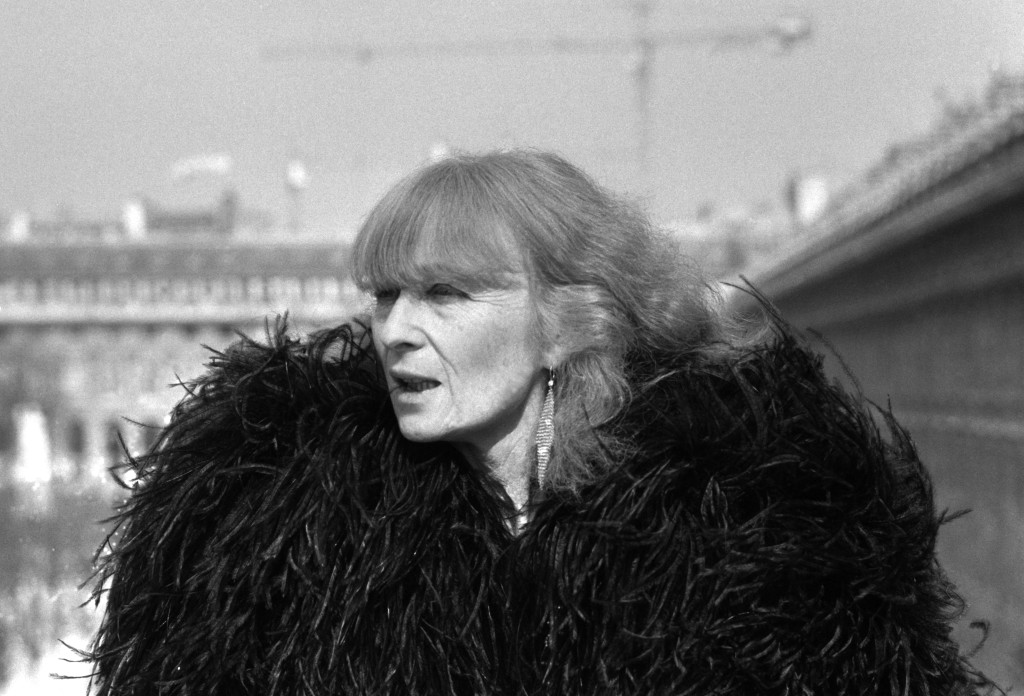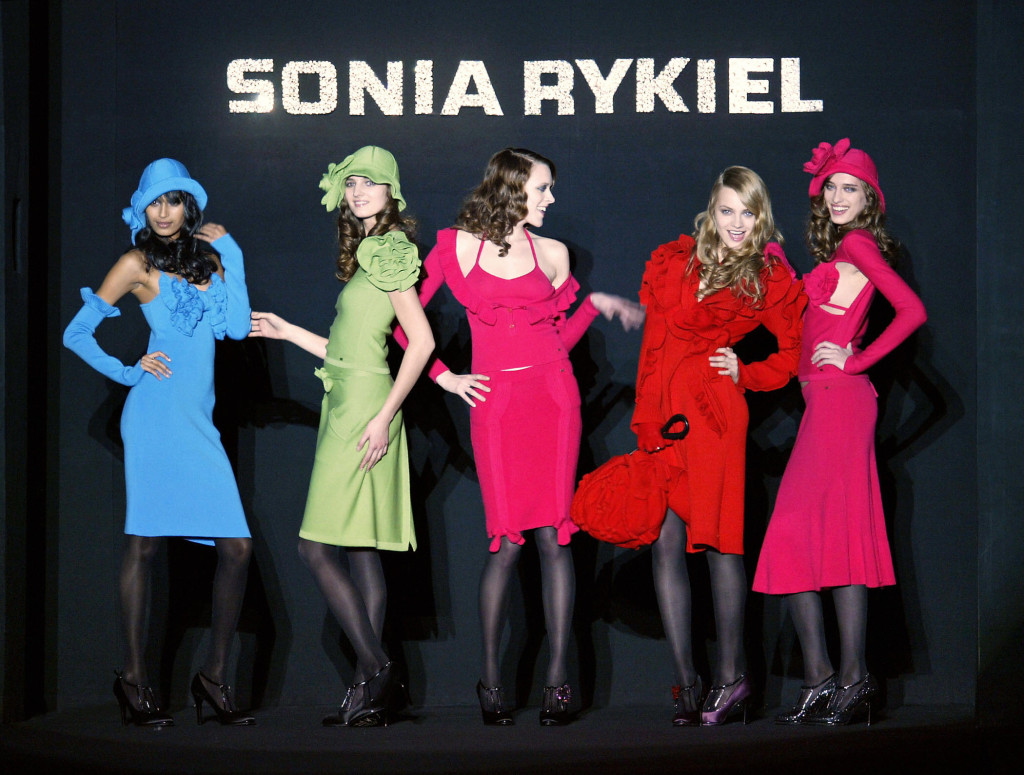Suzy Menkes salutes the life and work of the ground-breaking French fashion designer
The carrot-red hair, the narrow nose, the tiny frame… From the beginning of her career, Sonia Rykiel herself was the essence of her fashion world.
Her sweaters were shrunken, the better to pull over bare flesh in the bra-burning Sixties. Her clothes were feminist, yet quintessentially French in their sensual “Je ne sais quoi”.
The Sonia Rykiel look was of its 20th-century era, yet also inventive and perceptive about society in the future.
Who was the first to show fashion in the raw? Sonia, with her inside-outside seams. Who foreshadowed the slogan T-shirt? Sonia, with her “statement” sweaters. And it was Sonia who helped found the Paris “Left Bank” ideology, by opening a store in Saint Germain-des-Prés, which then had an artsy underground scene. I will never forget sitting squashed up in the small store that seemed more like a salon, as the designer recited her own poetry to create the background to the fashion show.
There are many things to say about Sonia Rykiel, who has died at age 86, but it is important to remember that she started a dynasty that was one of the last of the French family fashion brands.
Sonia was embraced by her daughter Nathalie and served by her grandchildren to keep her brand in the family until the lion’s share of the company was sold to a Hong Kong consortium in the new millennium.
I remember Yves Saint Laurent insisting to me, over lunch in the mid-Eighties, that Sonia had done more than himself to promote the power of women through what they wore.
The great couturier was not wrong. Even if Yves made women in trousers acceptable in the late 1960s, a decade earlier Sonia had deflated the ladylike grandeur of the post-war era and anticipated the boyish, unisex period. Her easy, ready-to-wear clothes were the essence of women’s liberation – from constricted clothing and from social tropes.
There was a reason that the Sonia Rykiel’s style was defined as “garçonne” or boyish. Her insistence on being a working mother and in creating sexually charged clothes that filled a fashion gap created by the invention of the contraceptive pill, meant that the designer was well ahead of her time.

Sonia Rykiel spring/summer 2009 ready-to-wear collection show in Paris. (Photo credit PIERRE VERDY/AFP/Getty Images)
Rykiel’s big, bold moment coincided with the youth upheaval in 1968, when students took to the streets. The rioters might not have gone on to wear Sonia’s hippy de luxe style of the Seventies, with its layered maxi skirts, signature striped sweaters, vividly coloured furs and cheeky berets, but there remained something defiant about the Rykiel look.
To the end, Sonia, who suffered from Parkinson’s disease, never bowed to convention and never, ever toned down her bright red hair.



